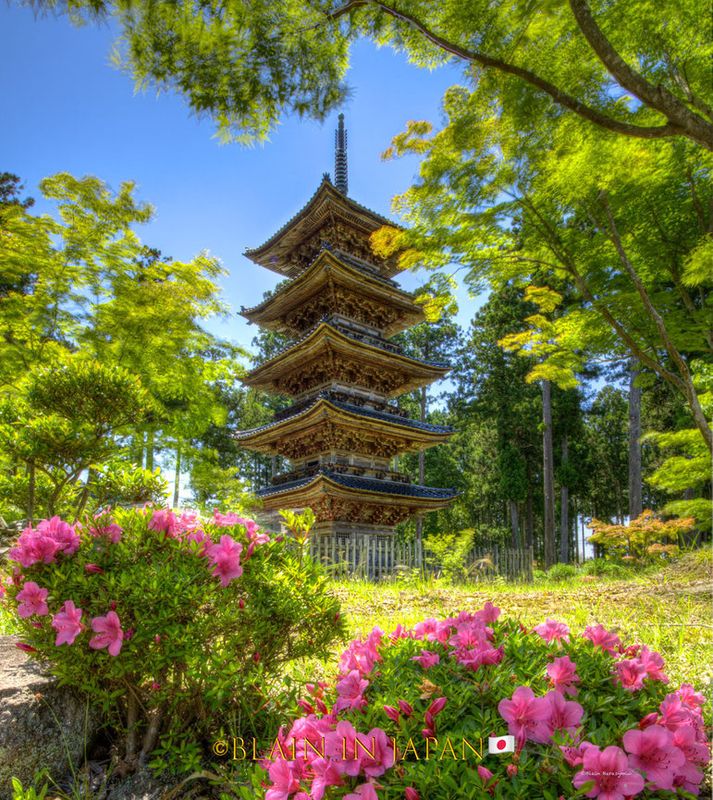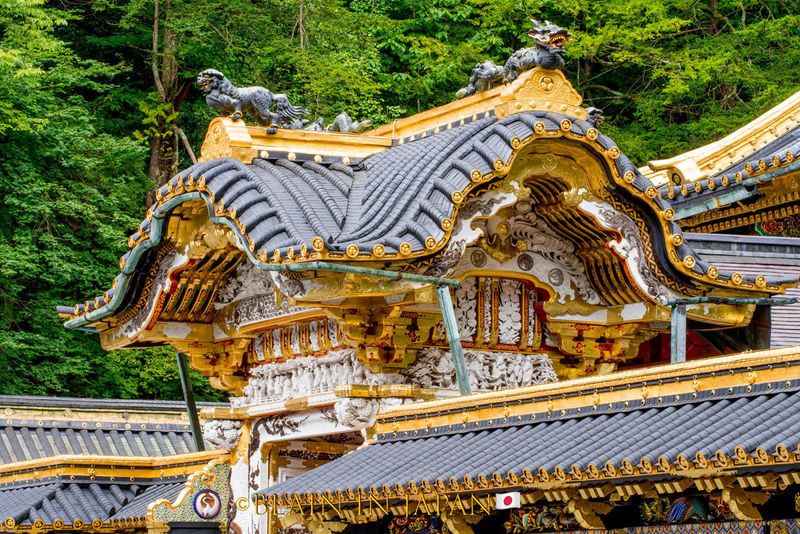Apr 5, 2022
Myosenji Temple Niigata’s Only Five-Story Pagoda - Sado Island’s Energy Vortex Power Spot
Gallery - Myosenji Temple Niigata’s Only Five-Story Pagoda - Sado Island’s Energy Vortex Power Spot

In the thirteenth century, a power spot was once again uncovered on Sado Island in the Myosenji Temple region. It is believed that the region was home to a Kofun village and burial grounds better known in Japan as Kofun mounds. While traveling across Japan, I always do an in detail investigation regarding the facts of ancient wood, stone carvings, and priceless iron cast artifacts that I encounter. But when it comes to a period in Japan known as the Kofun period and explaining the facts and dates of this period’s artifacts, I run into a stone wall from time to time. The reason I hit a barrier is that the Imperial Family is the caretaker of the Kofun period sites and only recognizes a pitiful percentage of the nation’s treasure trove from the over 170,000 Kofun mounds that are known to exist. The information ranges from non-existent to extremely limited, so my explanation turns toward folklore and oral accounts and storytelling about Kofun mounds in locations throughout Japan. As a historian, I do not like offering folklore as a historical fact because it borders on conspiracy theory, and over 95% of the time, I want nothing to do with conspiracy theorist’s theories. They spread the worst kind of hearsay and cloud actual fact-finding regarding this important era in Japan’s history.
When I visit Sado Island, Myosenji Temple is a must-see location. The famous Kodō Taiko drumming troupe are also part of my itinerary, most often sought out near Earth Day. Rather than the rhythmic beat of drums, many participants search for a Zen, calming experience akin to a midnight tryst in Tsubame’s milky white hot springs, and it’s also believed that the Kofun Era residents rejuvenating their energy in the same milky white hot springs, especially during full moons. Myosenji Temple resonates with the same Kofun Era energy as Tsubame’s milky white hot springs. The temple is built on the former site of Sadogashima castle and is home to the only 5-story pagoda in Niigata. The story of its construction is a tale in and of itself. To complete the momentous task of constructing the pagoda, it took two master temple carpenter artisans. The first master carpenter artisan took particular interest in training his apprentice because the 2nd carpenter artisan to carry the responsibility of Myosenji Temple’s completion was his eldest son. The pagoda represents Japanese dogma, samurai diligence, and fine attention to detail that is synonymous with a master artisan, and whenever I visit with friends for the first time, I ask them to find one exposed screw or nail in the pagoda. After several minutes of, “Umm…maybe there” and “that could be one,” I tell my friends who are visiting that there is not one nail or screw in the entire structure.

For those interested in a further injection of history into their Niigata photo workshop experience, I happily share the samurai connections to Myosenji Temple, the details reaching back all the way to the Kamakura Era in Japan. The temple was believed to have been established in 1278 by a monk of the Nichiren sect of Buddhism. The monk, Abutsubo Nittoku Shonin, was formerly a samurai warrior serving the palace guard in Kyoto. He accompanied Emperor Juntoku to Sado Island when the Emperor was exiled due to his complicity in his father’s ill-conceived attempt to unseat the Kamakura bakufu. Shonin stayed with Juntoku until he passed away in 1242.
The temple’s construction is believed to be modeled on the Toshogu Shrine in Nikko, but the two temple’s facades speak to the contrast in their location’s characters. Nikko Toshogu is a Tosho-gu Shinto shrine located in Nikkō, Tochigi Prefecture, Japan. Together with Futarasan Shrine and Rinno-ji, it forms the Shrines and Temples of Nikkō UNESCO World Heritage Site. Nikko is a popular photography location, and millions of visitors capture images of its grandiose shrines, temples, and natural landscapes of Nikko. I know Nikko because I have spent 100s of hours exploring and documenting it. I’m familiar with each piece of architecture on the temple grounds, and I know the region and the best times of day to visit and photograph like I know the back of my hand, and UNESCO has always been kind to me. The Toshogu Shrine glitters gold in the sun and is one of the most spectacular shrines from the entire temple and shrine complex that make up my photo tour of Nikko. By contrast, Myosenji is almost restrained in its appearance, highlighting the skills of the master craftsmen in completing it. Myosenji Temple focuses on function more than form, and the pagoda serves as a spiritual lightning rod focusing the power spot’s energy into a powerful vortex. The gardens and pond on the grounds are diligently maintained, and they make an excellent frame for photos of the temple and the pagoda as well. The pagoda, grounds, and temple all bespeak authentic Japan, which I love so much, and part of the reason why I decided to call Niigata my home.

I never thought I would call Japan my home, but after 20 years I understand the beauty and appeal of Land of the Rising Sun. Part of my affection for Japan stems from my bride, Manami who introduced me to the essence of this magical land. As an amateur historian and sociologist, the uniqueness of Japan’s past captured my heart and soul, bonding me to the society and culture that is now a part of me. This society has embraced me, and I am no longer a visitor, I have recast myself as a cultural hybrid, always updating my identity with the rich cultural information from the past into the present, and, invariably, the future.



0 Comments